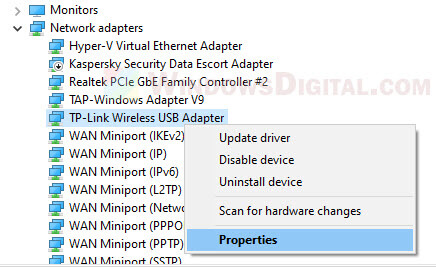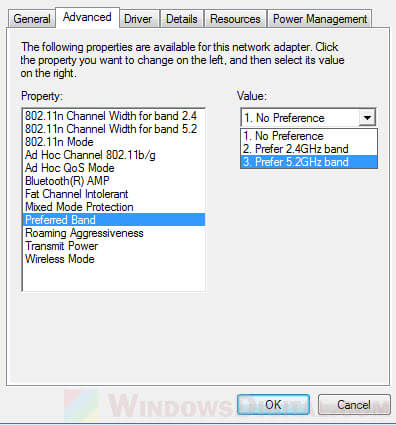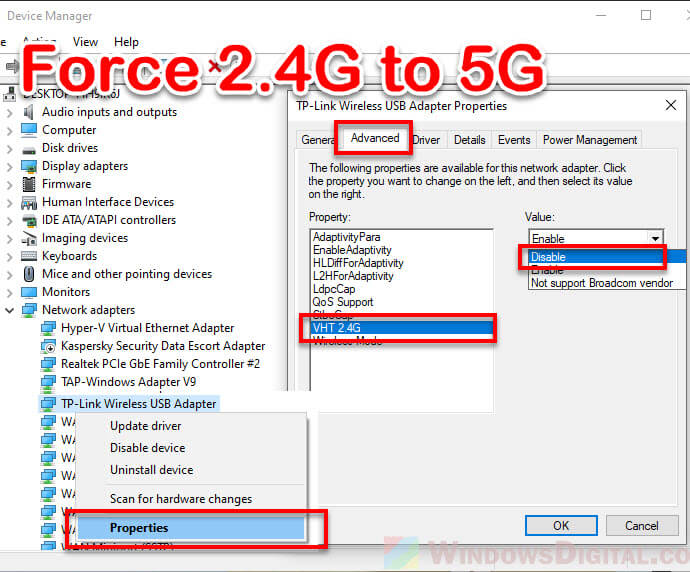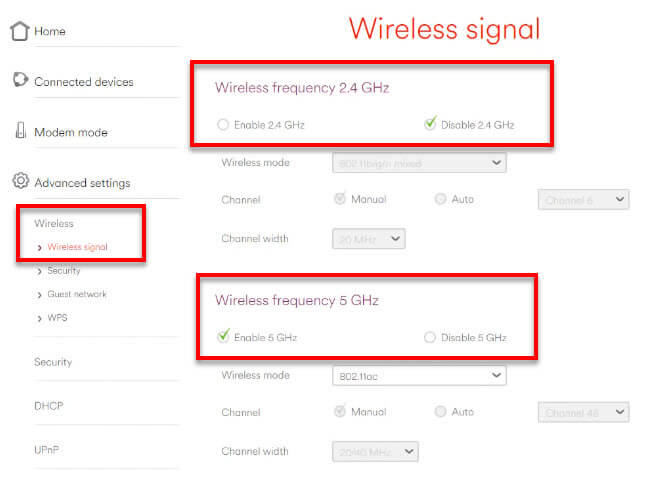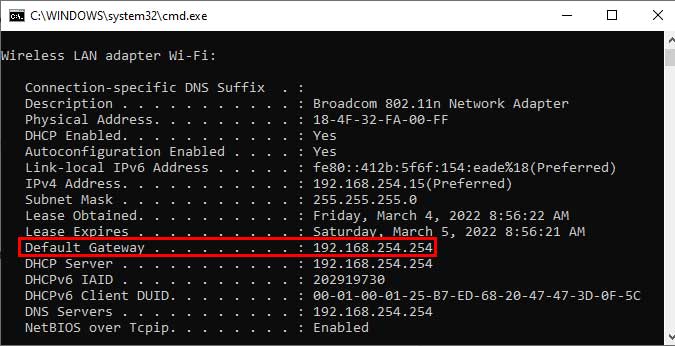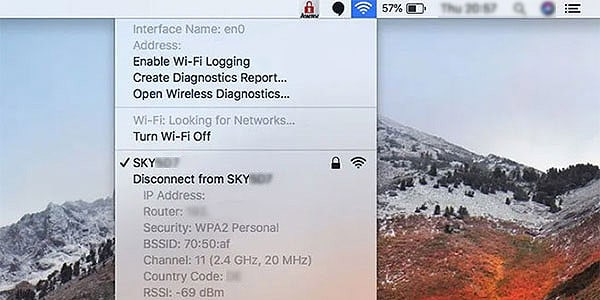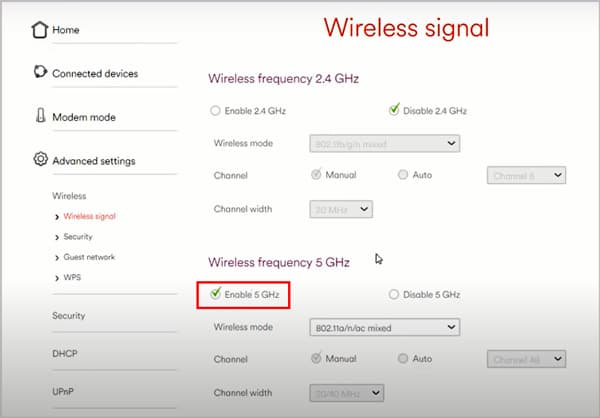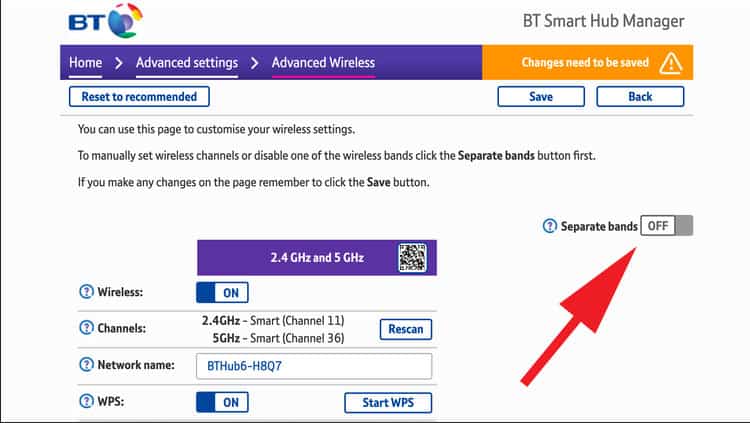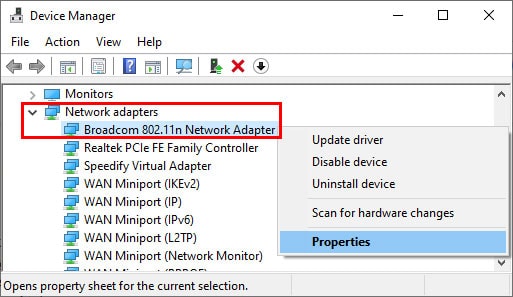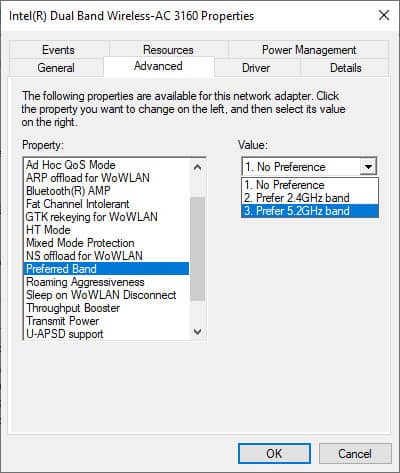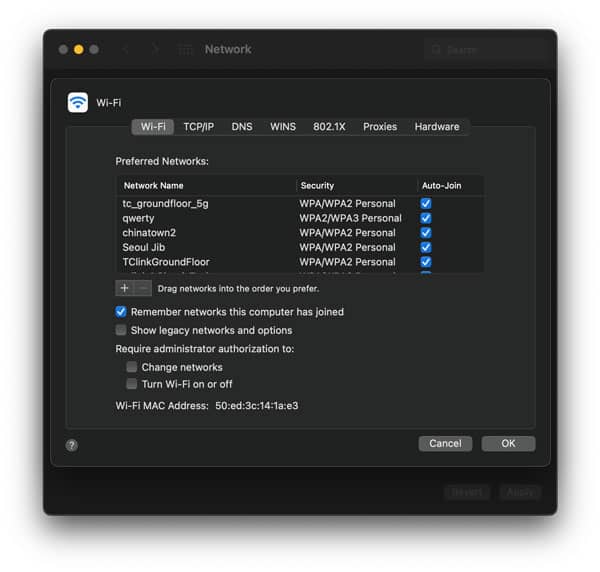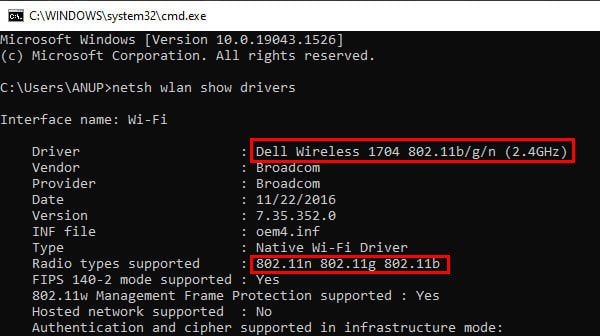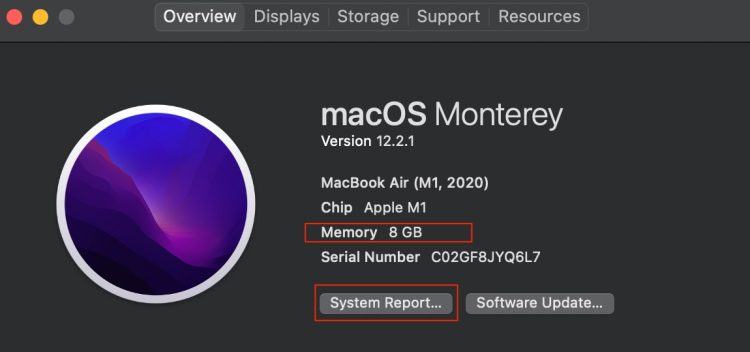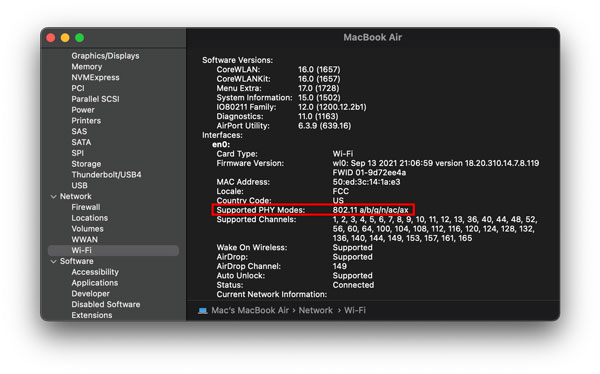- How to Change 5GHz to 2.4GHz or Vice Versa in Windows 11/10
- Change 5GHz to 2.4GHz or vice versa in Windows 11/10 (Wireless Adapter)
- Force change 2.4GHz to 5GHz
- No option for “preferred band” or “VHT 2.4G”
- Change WiFi radio frequency in Wireless Router
- How to Change Wi-Fi from 2.4GHz to 5GHz
- 2.4GHz vs. 5GHz (Pros and Cons)
- Turn on 5GHz Transmission in Router
- Change to 5GHz in Router Settings
- How to Switch Wi-Fi from 2.4GHz to 5GHz in Windows?
- How to Switch Wi-Fi from 2.4GHz to 5GHz in Mac?
- What to Do If 5GHz Doesn’t Show Up On Windows/Mac?
- Windows
- Mac
How to Change 5GHz to 2.4GHz or Vice Versa in Windows 11/10
Depending on what you want to achieve, you can switch the WiFi radio frequency on some of the 5GHz supported wireless adapters between 5GHz and 2.4GHz in Windows 11/10, or you can also change the WiFi frequency directly from your wireless router which will affect all devices connected to it.
This guide shows how to change radio frequency (band) of a wireless adapter (only adapters that support radio frequency switching) from 2.4ghz to 5ghz or vice versa in Windows 11 or 10, and how to force change the WiFi radio frequency on a wireless router.
Change 5GHz to 2.4GHz or vice versa in Windows 11/10 (Wireless Adapter)
The ability to force change the preferred band of radio frequency of a wireless adapter depends on if the adapter has the option for it. Not all wireless adapters have the option to switch between 2.4GHz and 5GHz bands.
To switch between the preferred bands – 5GHz and 2.4GHz, of a wireless adapter in Windows 10/11, follow the steps below.
- On Windows 11/10 search bar, search for and open “Device Manager“.
- In the device manager window, click on “Network adapters” to expand it. This will list all network adapters detected on your PC.
- Right-click on the Wireless adapter that you wish to change the radio frequency, then select Properties.
- Go to Advanced tab.
- Under Property, look for an option called “Preferred Band” or “Band“. Select it.
- Click on the drop down menu under Value and select your preferred band: 2.4GHz or 5GHz.
Force change 2.4GHz to 5GHz
If you want to force change your wireless adapter to use only 5GHz instead, if there is no option for “preferred band” in the properties of the wireless adapter, look for another option called “VHT 2.4G“.
If the “VHT 2.4G” option is available, you can change the value to “Disable” to disable the 2.4G entirely and force your wireless adapter to use only 5G.
No option for “preferred band” or “VHT 2.4G”
If you don’t see any of these option, it’s likely that your adapter only supports 2.4 GHz. In some cases though, even if an adapter supports both 5GHz and 2.4GHz, there isn’t any option for you to change its preferred band.
If this is the case, the only choices you have would be to manually connect to a 2.4G or 5G wireless network (WiFi that supports both bands usually have both 2.4G and 5G networks that you can connect to).
Or to change the preferred radio frequency of the WiFi on your wireless router, which will affect all devices connected to it.
Change WiFi radio frequency in Wireless Router
Most modern wireless routers have both 2.4 GHz and 5 GHz wireless networks available for any nearby devices to connect to. If you prefer to use 2.4G or 5G, just choose the respective network.
If you insist to force change your wireless router’s radio frequency so that it uses only 2.4 GHz or 5 GHz, below is an example of what settings you should look for to change the radio frequency of a wireless router.
What you need:
- You need to have access to the wireless router.
- You need to know the address to your router – the default gateway of your network. You can check this by entering “ipconfig” in command prompt.
- You need to know the login credentials to your wireless router.
- The wireless router has to have the relevant settings for you to change its wireless frequency.
As different routers have different user interfaces, the instruction and screenshot below are just examples of what settings you should look for on your router to change the preferred wireless frequency.
- On a browser, enter the default gateway of your network (the address to your router), for example, 192.168.0.1.
- Login to your router.
- Look for “Wireless” settings, then look for “Wireless signal“, “Wireless frequency“, “WiFi frequency” or “Radio frequency” where you can find the settings to enable or disable the 5GHz and 2.4GHz wireless frequency.
In the screenshot above, as an example, to change my router so that it uses only 5 GHz wireless frequency, I would need to enable only 5 GHz and disable 2.4 GHz.
Not all wireless routers allow user to force enable or disable the wireless frequency modes. If you can’t find any relevant settings to change the wireless frequency on your router, it’s likely because your router doesn’t allow wireless frequency changing or simply doesn’t support 5G.
How to Change Wi-Fi from 2.4GHz to 5GHz
5GHz supports blazing speeds over 1Gbps, thanks to more channels and minimal interference. Changing your Wi-Fi from 2.4GHz to 5GHz is quite straightforward; simply broadcast 5GHz from your Router Configuration page.
Before getting into the details, you should first check if your router is single-band (supports only 2.4GHz) or dual-band (supports both 2.4GHz and 5GHz). A quick Google search of the router’s model number should do the trick. You can also refer to the router’s manual if you prefer.
2.4GHz vs. 5GHz (Pros and Cons)
- Long-range (Signal can pass through walls and solid objects easily due to better RF Penetration)
- Compatible with most devices
- Slow (With 2.4GHz 802.11n, you only get 72 Mbps max per antenna)
- Congested (Used by Bluetooth devices, security cameras, cordless phones, microwaves, and most old devices)
- High interference (14 channels spaced 5MHz apart)
- Fast (With 5GHz 802.11ac, supports Max Speed up to 1300 Mbps)
- Less crowded
- Minimal interference (25 channels spaced 20 MHz apart)
- Short-range
- Not compatible with older devices
- 5 GHz routers have a tendency to overheat
Turn on 5GHz Transmission in Router
Before anything else, you should turn on 5GHz transmission through your router configuration page. You’ll need your router’s IP Address and login credentials to access the router settings. These can be found at the back of your router. Unless you’ve changed it before, the default values for most routers will be:
IP Address: 192.168.0.1 or 192.168.1.1 Username: admin Password: admin or password
IP On Windows
Alternatively, use ipconfig and note the IP Address. If you don’t remember the login credentials, press and hold the reset button on your router for 10 seconds. This resets them to the default values.
- Press Windows + R to launch Run.
- Type cmd and press Enter.
- Type ipconfig /all and press Enter.
- While holding down the Option/Alt key, press the Wi-Fi icon from the menu bar (top-right).
- Note the Router Address.
Change to 5GHz in Router Settings
Now we can switch the Wi-Fi to 5GHz via router settings. The exact steps may differ, but they will be similar for most routers. Here are detailed steps to access router settings on Windows, Mac, and Phones for various popular router models if necessary.
- Open a browser and enter the IP Address into the URL bar.
- Enter the admin credentials and log in to the router configuration page.
- Navigate to the Advanced Settings / Advanced Wireless section.
- Change the 802.11 band from 2.4GHz to 5GHz or Enable 5GHz depending on the setting you see.
Turn Separate Bands on or off as you prefer.
Turning it ON separates your Wi-Fi into two different networks (2.4GHz and 5GHz). You can choose which one to connect to this way.
Turning it OFF makes them a single network. Your device will automatically connect to the ideal band and switch between them as required.
How to Switch Wi-Fi from 2.4GHz to 5GHz in Windows?
You’ll need to alter the adapter settings to enable operation on 5GHZ (reception).
- Press Win + R to launch Run.
- Type devmgmt.msc and press Enter to launch Device Manager.
- Expand the Network Adapters menu.
- Right-click on your Wi-Fi adapter.
How to Switch Wi-Fi from 2.4GHz to 5GHz in Mac?
To set the 5GHz network as the preferred option, you’ll need to make it the first network your device tries to connect to. To do so,
- Click on the Apple icon and open System Preferences.
- Navigate to Network > Advanced.
- Drag your 5GHz Network to the top of the list and press OK.
What to Do If 5GHz Doesn’t Show Up On Windows/Mac?
First: We already mentioned this at the start, but to reiterate, check if your router supports 5GHz or not. Google your router’s model number and check the specs online, or check the router’s manual.
Windows
If your device only detects 2.4GHz and the 5GHz Wi-Fi network doesn’t show up, you should first check if your laptop supports 5GHz. To do so,
- Press Windows + R to launch Run.
- Type cmd and press Enter to open Command Prompt.
- Type netsh wlan show drivers and press Enter.
Check the Radio types supported.
802.11n, 802.11g, and 802.11b mean your device only supports 2.4 GHz.
But if it also shows 802.11a or ac or ax, your device supports both 2.4GHz and 5GHz.
If your laptop supports 5GHz, you should update your Network driver. To do so,
- Press Windows + R to launch Run.
- Type devmgmt.msc to open Device Manager.
- Expand Network Adapters by pressing the arrow.
- Right-click your network adapter and click Update Driver.
Mac
To check if your Mac supports 5GHz,
- Press the Apple icon and click on About this Mac.
- Open System Report.
- Expand the Network tab and switch to the Wi-Fi section.
- Check Supported PHY modes.
802.11b/g/n means your device only supports 2.4GHz.
802.11b/g/n/a or ac or ax means your device supports both 2.4GHz and 5GHz.
Anup Thapa primarily covers Windows systems, networking, and computer hardware at TechNewsToday. Anup has been writing professionally for almost 5 years, and tinkering with PCs for much longer. His love for all things tech started when he got his first PC over 15 years ago. It was a Pentium IV system running Windows XP on a single 256 MB stick. He spent his formative years glued to this PC, troubleshooting any hardware or software problems he encountered by himself. Professionally, Anup has had brief forays into a variety of fields from coding and hardware installation to writing. In doing so, he’s worked with people of different backgrounds and skill levels, from average joes to industry leaders and experts. This has given him not just a versatile skill set, but also a unique perspective for writing that enables him to concisely communicate complex information and solve his reader’s problems efficiently. You can reach out to him at anup@technewstoday.com.
